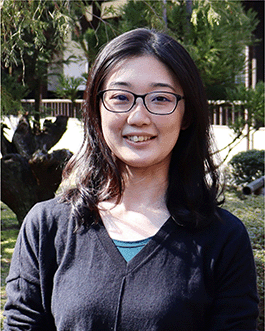Nanoscale Horizons Emerging Investigator Series: Dr Kayoko Kobayashi, Kyoto University, Japan
Abstract
Our Emerging Investigator Series features exceptional work by early-career nanoscience and nanotechnology researchers. Read Kayoko Kobayashi's Emerging Investigator Series article ‘Atomic-scale dents on cellulose nanofibers: the origin of diverse defects in sustainable fibrillar materials’ (https://doi.org/10.1039/D2NH00355D) and read more about her in the interview below.
Dr Kayoko Kobayashi is an Assistant Professor at the Division of Forest and Biomaterials Science of Kyoto University. Her main research interests are the solid-state structure of wood and other biomaterials and their relationships with physical properties. She earned her PhD from the University of Tokyo in 2014 for her study on crystal structure of hydrated polysaccharides. She worked as a postdoctoral fellow at Kyoto University, where she focused on image processing and machine learning applied to wood anatomy. Before being appointed to her current position, she returned to the University of Tokyo as a Project Assistant Professor.
Read Kayoko Kobayashi's Emerging Investigator Series article ‘Atomic-scale dents on cellulose nanofibers: the origin of diverse defects in sustainable fibrillar materials’ ( https://doi.org/10.1039/D2NH00355D ) and read more about her in the interview below:
NH: Your recent Nanoscale Horizons Communication describes the structural origin, mechanism of formation and point at which dent defects are formed on the surface of cellulose nanofibers through comparison of experimental measurements and computer simulations. How has your research evolved from your first article to this most recent article and where do you see your research going in future?
KK: I have been studying the fundamental solid structure of wood, cellulose, and related polysaccharides. One of the projects I am most interested in working on is the analysis of microscopic images using image processing. We started this project with the goal of improving the reliability and efficiency of microscopic image analysis, but our precise analysis led to an unexpected discovery: dent defects on cellulose nanofibers. We understand that this finding is crucial to solving various challenges we face in controlling the morphology of cellulose nanofibers.
NH: What aspect of your work are you most excited about at the moment?
KK: I am always eager to learn and start new things, and I feel excited when they finally work!
NH: In your opinion, what are the most important questions to be asked/answered in this field of research?
KK: I think one of the most important questions is how to collect complete information on the complex structure of biomaterials.
NH: What do you find most challenging about your research?
KK: Because the structure of biomaterials is heterogeneous and variable, the local structural information from microscopic images may differ from the average structure of the entire material. I think finding ways to bridge this gap is most challenging in my research.
NH: In which upcoming conferences or events may our readers meet you?
KK: I will be attending ACS Spring 2023 and the 5th International Cellulose Conference.
NH: How do you spend your spare time?
KK: Walking around traditional temples and shrines in Kyoto.
NH: Can you share one piece of career-related advice or wisdom with other early career scientists?
KK: Learn from other researchers with an open mind and without preconceptions. This will give you a wider range of ideas and techniques, leading to improvement of your own work.
| This journal is © The Royal Society of Chemistry 2023 |

